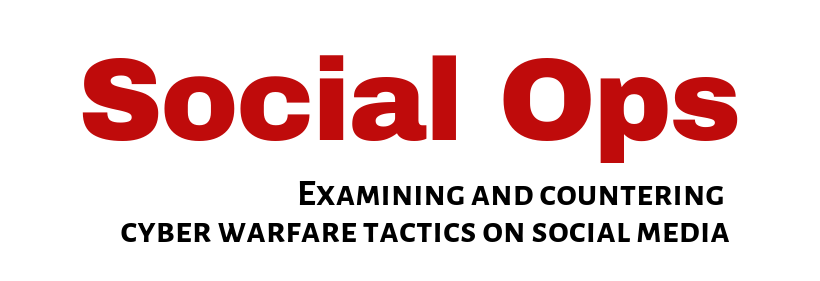If a picture is worth a thousand words a doctored photo is worth many more in spreading disinformation and sowing division. Learn how to spot and debunk fake photos.
Both propagandists and marketers know visual images are the most powerful and efficient tool to deliver a message. A dramatic image that provokes fear or anger bypasses our logic brain and triggers our emotional response almost instantaneously. If the picture in question supports our preferred narrative we may forget to question its veracity and immediately click share or pound out a fiery comment. And pollution of the information stream continues.
Fake photos spread because we spread them. Fortunately there are tools to easily vet and debunk falsified photos. The very first step is to check our emotions and ask, “Is this really true?” and look at the photo again. In most doctored photos there are small details that just don’t make sense. In some there are big details that are just absurd. When we are looking through the filters of fear or anger we tend to miss these clues.
When we take a minute and take a breath and look again they are hard to miss. Take a look at these examples and see if you can spot the anomalies.
Fake Photo Example 1: Michael Bennet Appearing to Burn The American Flag
This circulated early in the Take A Knee controversy. Michael Bennett is depicted with a burning American flag in the locker room. The original photo of Bennett rallying his team was pulled from the Seahawks official website. The original photo of the flag has been circulating heavily on the internet since 2008. Can you spot the anomalies in the fake photoshopped picture of Bennett “holding” the burning flag?
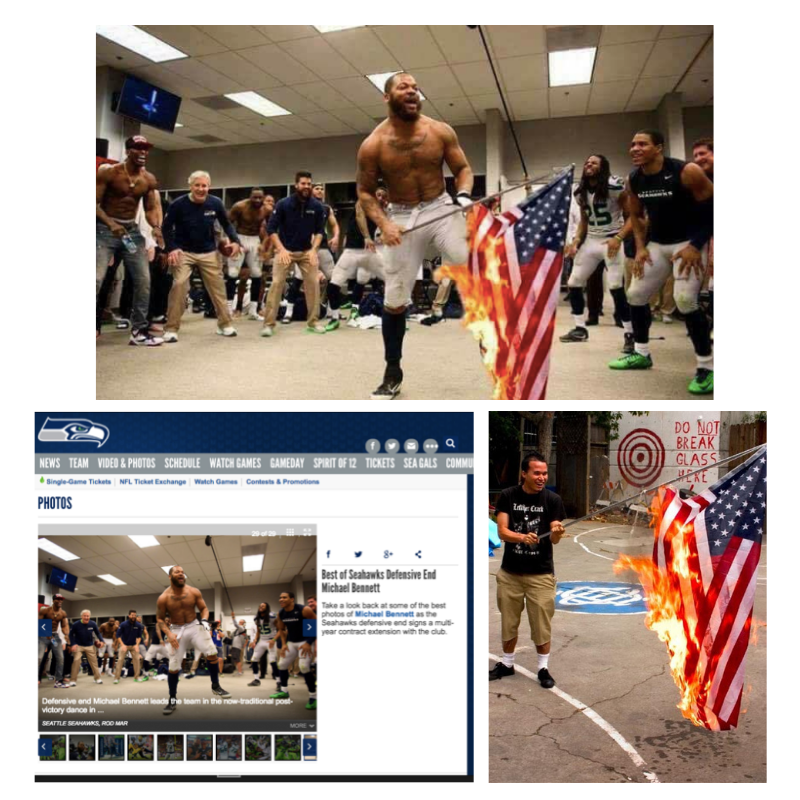
The Tells: Bennet’s left hand is resting on his hip, not holding the flag. It is positioned at abut the right spot along the flag pole, but it is resting on his hip, not supporting the pole. In doctored photos body positioning may be off as a pose is forced into a new context.
The room is filled with fire sprinklers. A fire that size would set off fire sprinklers and alarm systems.
Note the original photo of the burning flag include drips of the drips from the fluid used to ignite the flag. That’s not a detail one would usually think about and it reflects a common tell of doctored photos. Subtle details like shadows are missing or off.
Fake Photo Example 2: Berkeley Antifa Protester Appearing to Beat Police Officer
This circulated during the 2016 protests at Berkeley. The original photo is from the 2013 austerity riots in Greece and appeared on Getty Images. The anomalies in this image are very subtle.
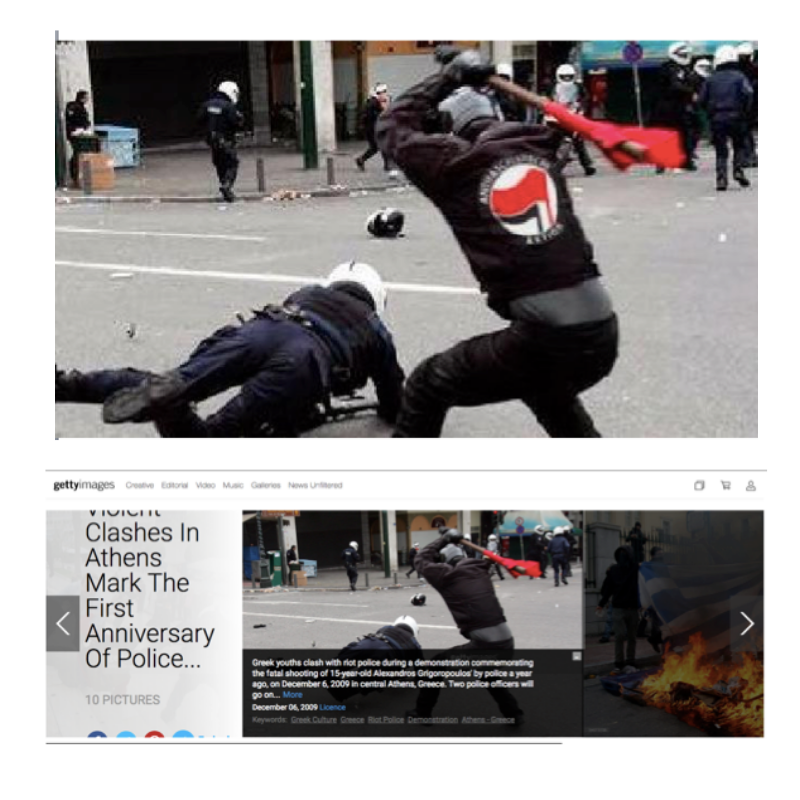
The Tells: The signs in the background are not American signs. That sort of detail is common in doctored photos. Elements in the background, such as signs, buildings and foliage do match the location claimed in the doctored photo narrative.
Fake Photo Example 3. Emma Gonzalez Appearing to Tear The Constitution
Almost as soon as the Teen Vogue videos and pictures of Emma Gonzalez tearing a shooting target were released an falsified version with The Constitution photoshopped in began circulating. Given that the original is a staged photo with a clean background the falsified version has no obvious indicators it is false. It is interesting to note along with photoshopping in The Constitution they darkened under her eyes making her look more sinister.

Photo Vetting Tool 1: Google Image Search
Google has an image search option. With a few clicks you can download a questionable picture and upload into Google Image search. This video explains how.
Practice the technique with the fake photos of Michael Bennet of Emma Gonzalez
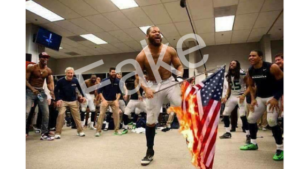
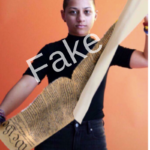
At this point the Google search on these images should return numerous articles and posts debunking these photos. Often when a doctored photo first appears results for the falsified photo dominate the top results. While Google claims to be addressing this issue, it is still a problem. Keep digging beyond the first page and be the person to find the original photo or check back to find results when others have done the debunking research.
Reverse image search is a helpful tool for unmasking bots and trolls on social media. They often steal profile pictures from stock photo sites and real people’s social media profiles. A Google image search of their profile picture and other photos often quickly reveals the original source.
Photo Vetting Tool 2: TinEye
If you are early in the debunking of a photo TinEye maybe more effective than Google Image search. It works just like Google image search, download the picture, upload it into the search bar. This site’s “Oldest” filter sorts images by their earliest appearance on the internet, often . Some photos are heavily repurposed into numerous false narratives. This tool can reveal those examples.
When you verify a photo is fake
You can help spread the word that a photo is fake by sharing a link to an article from a reputable source debunking the article.
If you post a debunking of a falsified photo create a new image with both the original and the fake photos. In social media separate images may end up independently inserted into others’ feeds and have the potential to propagate the image intended you intended to debunk.
If a friend is spreading fake photos on social media consider how to approach them with the information the photo is fake. Sometimes a polite comment on the post with evidence that the photos is doctored will work. The advantage of this is the debunking information will be available for other people seeing the post and may prevent them from sharing the false photo. However, sometimes people take offense at a public correction. It may be more effective to share the debunking information in a private message.
Whatever steps you choose to take on stopping the spread of fake photos — simply not engaging with them, posting debunk information, reaching out to others — every little bit helps.
